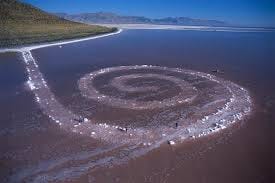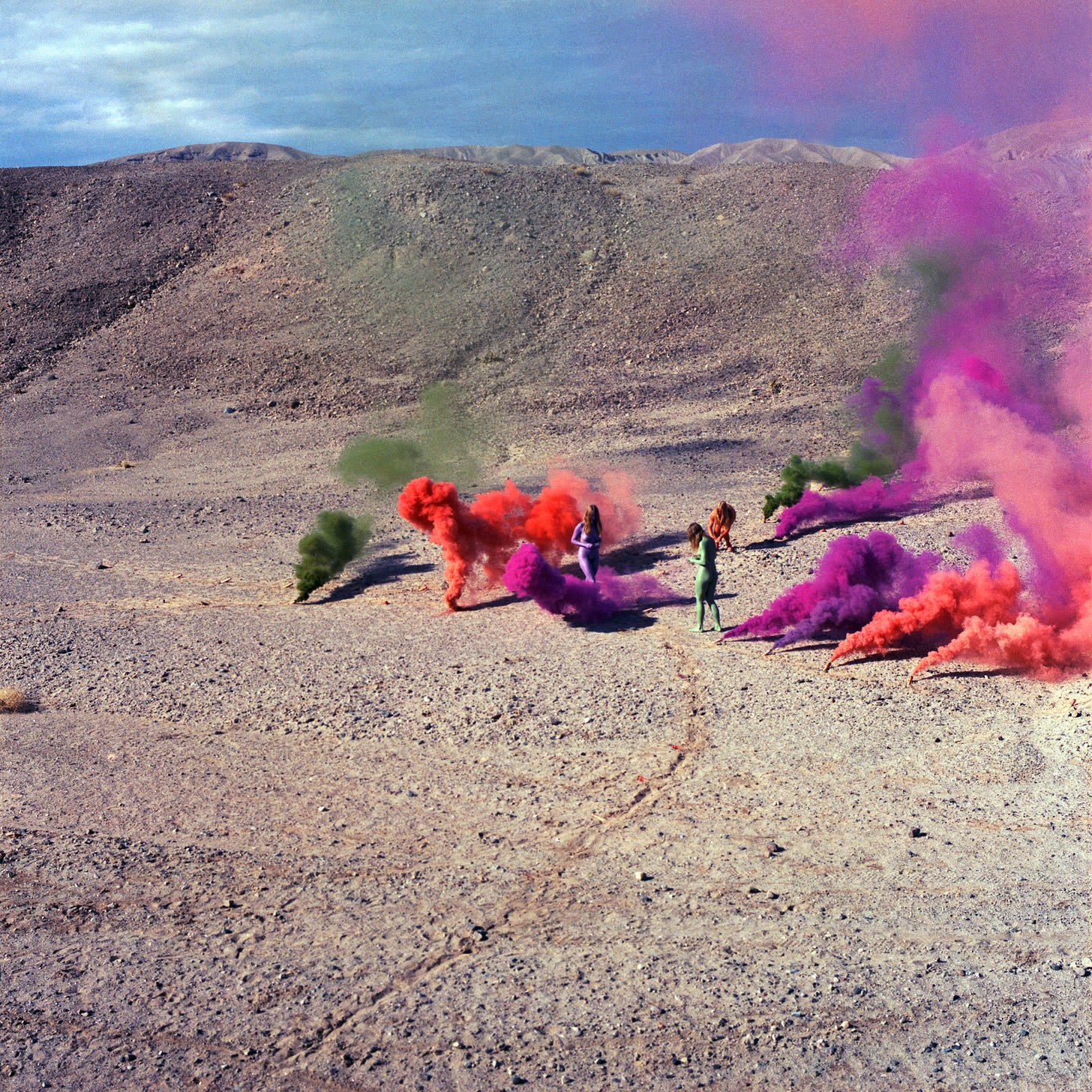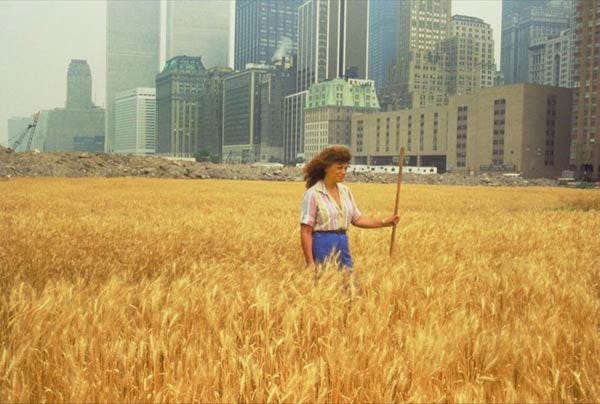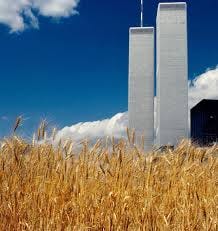It is not just planting, but planting the paradox.
—Agnes Denes
In the four weeks since my book has come out I’ve been bouncing all over the country trying to promote it. I haven’t had that much time to see art, though I did go to the ballet by myself twice in the five days I spent back in New York in between tour stops—I am the kind of nerd who lives for ballet and New York City Ballet’s winter season, which I mostly missed, was peaking when I was home. I saw the new Justin Peck work (my quick review is on my YouTube, but let’s just say I was on the verge of happy tears the entire time), and I also got to see Indiana Woodward’s beautiful little feet in Scotch Symphony, which is set to some bouncy Mendelsohhn (I kept thinking to myself this is so much better than Brigadoon), and watch Meghan Fairchild (who is a tiny but impressively sturdy Polly Pocket ballerina) nail all the hard show-stopping steps of Balanchine’s Sylvia pas de deux. But later in the week, when I finished my talk with the truly bad ass Lara Love Hardin (a mother of four boys whose memoir about heroin addiction and going to prison for theft and fraud left me FLOORED) in Palm Springs at the Reader’s Festival, put on by the Best Bookstore in Palm Springs (which is, bizarrely, the only book store in Palm Springs), I made the pilgrimage to the Annenberg Estate, Sunnylands, in a town away called Rancho Mirage.
I wanted to see the A. Quincy Jones mid-century architecture of the main house, where Walter and Leonore Annenberg, a deeply philanthropic couple and American ambassadors to the UK, hosted eight US presidents and numerous foreign dignitaries at what they used as a winter residence. Since their deaths, the property has been remade into a museum, gardens, and also a residency for heads of state, where they can convene to “promote world peace and facilitate international agreement.” I was just there to see the art, though, and the art was great. Seeing a good museum show always feels like a brain reset, and they did have a smart exhibition up about the interior decor of the main house, which was done in the 1960s by William Haines (the father of Hollywood Regency style). But outside, they had a new work by Agnes Denes, an artist I have long adored and am remiss to have not discussed with you sooner.
I could have fit Agnes Denes in after Ana Mendieta, whose beautiful, earthy self-portraits where she covered herself with rocks and flowers and laid down in nature—references to the second wave feminist ideal of the mother-goddess—existed in stark contrast to her violent works about rape and murder. And in the larger context, I could write about Agnes Denes in terms of the art movement known as Land Art, which is most often associated with pioneering male artists of the 1950s, 60s and 70s like Walter de Maria and Robert Smithson who—you guessed it—made art out in the land, which is also something we touched on when we looked at Judy Chicago’s Atmospheres series of Land Art-adjacent pyrotechnic performances.
Congruent with Land Art is the more specific genre of Ecological Art, which deals with nature and earth and space but has ethical underpinnings. And Agnes Denes remains a central figure of this movement. Born in 1931 in Hungary, raised in Sweden, and educated in the United States, Denes started off as a poet, melding her written word with ecological concerns in the groundbreaking piece Rice/Tree/Burial, made in 1968 in Sullivan Country, New York. Described by the renowned art historian Peter Selz as “probably the first large scale site-specific piece anywhere with ecological concerns,” the work involved planting rice seeds, which, as a universal substance of sustenance, represented life and growth; putting chains around trees as metaphor for decay, death, and defeat; and burying a time capsule with Denes’ haiku poetry inside to symbolize the life cycle and our relationship to the earth.
In 1972, Denes became a founding member of A.I.R. Gallery, which we talked about in my article about Howardena Pindell (also a founding member). A.I.R was made up of a group of 20-some women artists who wanted to fund a non profit, artist directed and maintained art gallery for showing women’s art. Pindell had suggested calling it the Eyre Gallery, after Jane Eyre, but the group settled on A.I.R. Gallery, a phonetic play on Pindell’s suggestion that stood for Artists in Residence, Inc. Throughout the 70s, Denes showed at A.I.R but also beyond— in galleries and institutions like the Corcoran in Washington, D.C., and the ICA in London. In 1982 she embarked on her then most ambitious work, Wheatfield—A Confrontation, which was commissioned by the Public Art Fund. In May of that year, a two acre landfill, two blocks to the north west of the World Trade Center, was planted by hand with wheat seeds, which were harvested four months later in August (in between they were weeded, fertilized, tended to, irrigated). “Planting and harvesting a field of wheat on land worth $4.5 billion created a powerful paradox. Wheatfield was a symbol, a universal concept; it represented food, energy, commerce, world trade, and economics. It referred to mismanagement, waste, world hunger and ecological concerns. It called attention to our misplaced priorities.”
At the Annenberg Estate, I saw a recent work, The Living Pyramid, on view until May 11, 2025. Commissioned in 2015 for Socrates Sculpture Park in New York, a version of this work has traveled to Documenta in Kassel and the Hayward in London among other international locations. In each place, the plants used are indigenous to the region and are given a chance to display their lifecycle to viewers. “Transformed into blossoms, the pyramid renews itself as evolution does to our species. The rigid angle becomes an arc to reach above, to reach what it wishes to reach. It is not just planting, but planting the paradox, a structured edifice of soil and grain, not on a farm or field, but in the heart of a busy mega-city or various parts of our world. It is planting the seed into soil and human minds.” You can see footage of this beautiful, living art work in my instagram reel.
Agnes Denes lives and works in New York.












